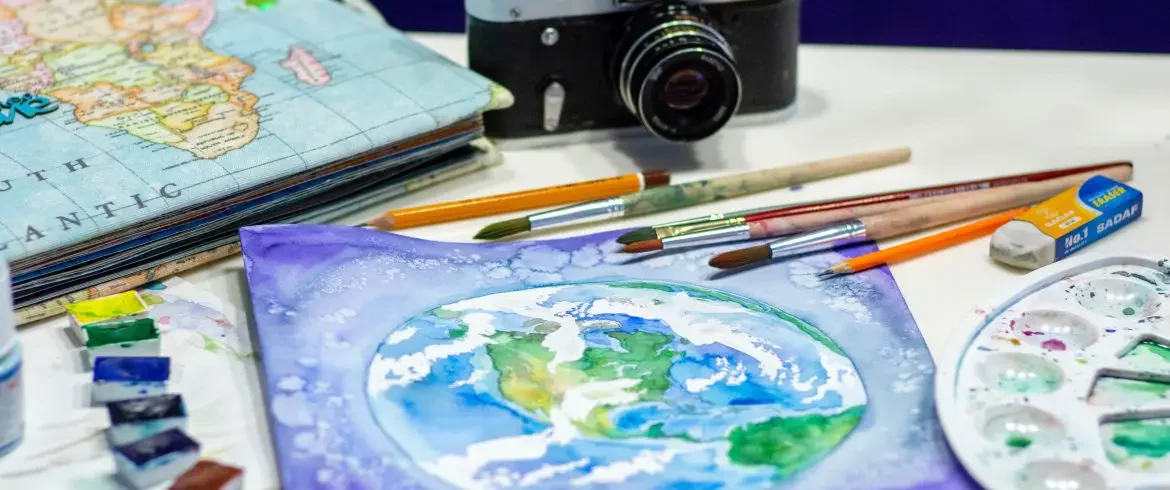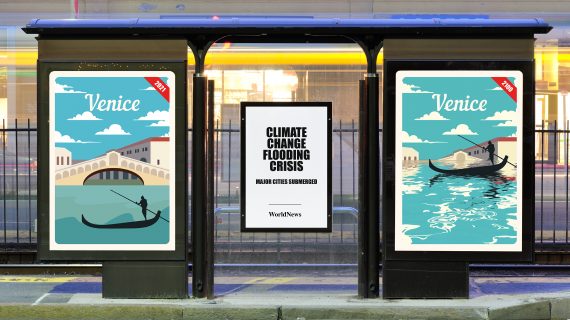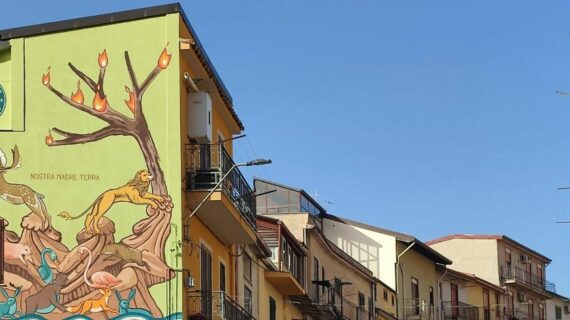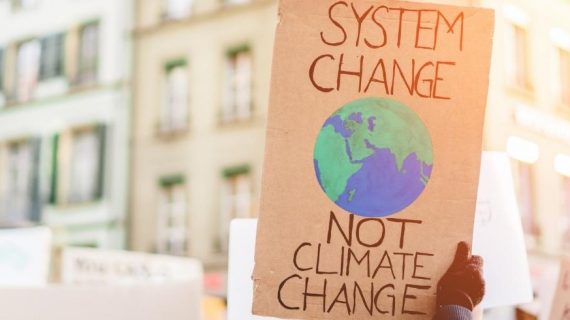Since ever, Arts have the ability to convey conflicting emotions to their observers, but also to make them reflect on important issues. What happens when art becomes a tool to denounce phenomena as big as devastating as climate change?
More and more artists are making their art available to denounce serious problems that afflict the planet and are dear to the community.
Art power
Art shakes the dust accumulated in everyday life from the soul
Pablo Picasso
Maybe this is the deep meaning of art: to move the strings of the human soul. Visual or sensory art is in fact able to give resonance to phenomena which humanity have to face, touching the emotionality of the collective.
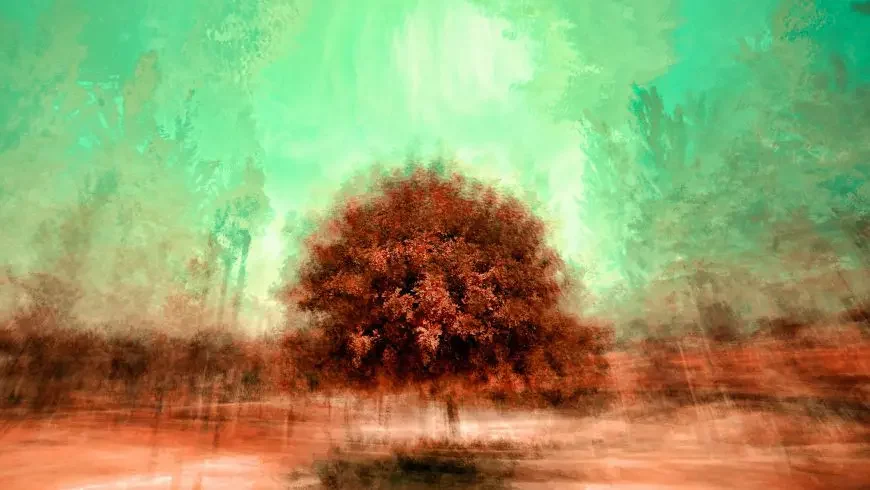
Another ability of art is to manage to change the observer’s perspective; apparently static graphic representations turn into meaningful talking objects that can convey the urgency of a certain theme and at the same time push the observer to act.
Art that denounces climate change
The art of climate change began in 2005 when the activist Bill McKibben warned of the need to raise collective awareness of the current climate crisis, convinced that the tragic scale of this crisis had not yet been understood. It thus appeals to the global artistic community, underlining the urgency of a return to the imagination that only artists are able to recreate.
This new look for art makes data more accessible to non-scientists, and directly conveys the status of the crisis. Those who actively participate are inspired by collectivism for the public good and the aim of making the climate crisis conceivable, close, and understandable.
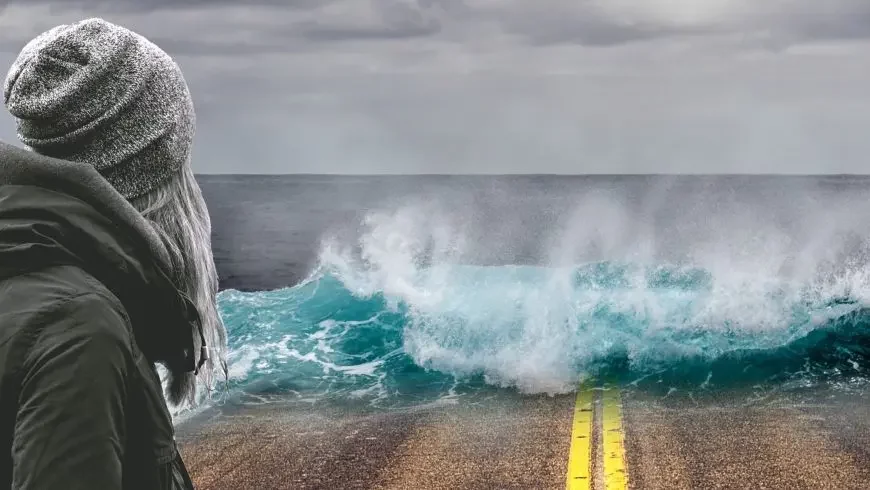
10 pieces of art that invite reflection on climate change
Art and science mix to make the consequences of this great and dramatic process more real and concrete in the minds of the citizens.
Let’s now look at 10 works of art that represent climate change and invite everyone to reflect.
1. HighWaterLine, 2007
This public art project was realised by Eva Mosher, an American environmental artist. Thanks to satellite images, topographic maps, and other tools, she drew a blue line between Manhattan and Brooklyn to indicate the areas that would be flooded in the years ahead due to climate change. This project was interesting also for the involvement of the population during its implementation.
3. Beauty Shop, 2007

Artwork by Lori Nix recreates the interior of a beauty salon after an extreme weather event falls down there with catastrophic consequences.
3. Flooded McDonald’s, 2008
Artwork by Superflex follows the ides of the aforementioned artist. In this case, he imagines that a McDonald’s is slowly flooded by water due to an intense thunderstorm.
4. Growing Pains, 2010

This piece of art by Laura Ball depicts a watercolour rhinoceros containing endangered or extinct animal species.
5. Cement Eclipses, 2011
The special feature of Isaac Cordal, a Galician artist, is the Miniature Street Art. His art is expressed through small concrete miniatures that can appear here and there in various unusual places of the city. Cement Eclipses is a collection of photos that take their installations in order to be told and remembered since the author knows very well that his creations will be at the mercy of time and people.
Through his miniature street art, Cordal wants to reflect on the behavior of the masses, on the too hectic life of the city, and especially on the dequalified relationship between man and nature. Figurines near the drains or immersed in the water of the puddles translate a deep sense of solitude; the man in miniature becomes an object and an inanimate urban object that blends into the other elements of the city.
6. Ice Watch, 2015

Artwork by Olafur Eliassaon in collaboration with the geologist Minik Rosing, made at the COP of Paris 2015. Includes 12 pieces of ice extracted in Greenland arranged in a circle outside the square of the Panthéon. Installation defined as “beautiful and disturbing”.
7. Melt
Deanna Witman is the author of this work. It is a collection of satellite images of icy landscapes taken for 15 years and then printed on salt paper so that the work itself would also disappear if exposed to sunlight. Deanna Witman herself is also the author of the Guide to Loss and Pain in the Anthropocene, which deals with climate change and the personal and community impacts associated with “ecological pain”.
8. Climate Stripes, 2016

This image is made up of a series of coloured stripes by Ed Hawkins. The lines, ordered chronologically, represent the anomalies of the annual average temperature. The author himself aimed to “infiltrate popular culture” with the hope of promoting a mass change in attitude towards the theme.

This image is reminiscent of a work done one year earlier, in 2015, by marine scientist Joan Sheldon. It is a scarf that illustrates the annual temperature of the last four centuries. The work bears the name Climate Scarf.
9. Support, 2017
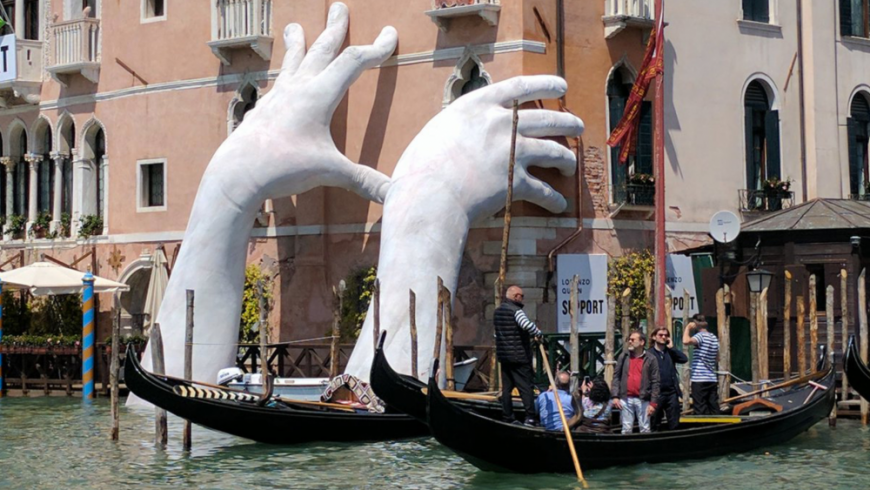
Let’s go back to our home country to mention a work that has undoubtedly astonished the world on the occasion of the 57th Venice Biennale. Lorenzo Quinn, visual artist, is the author. Two giant sculpted hands hold the Ca’ Sagredo Palace in Venice. They represent the support able to sustain one of the most historic buildings in the beautiful city, among the most threatened by climate change.
10. Climate 04- Sea Level Rise, 2017
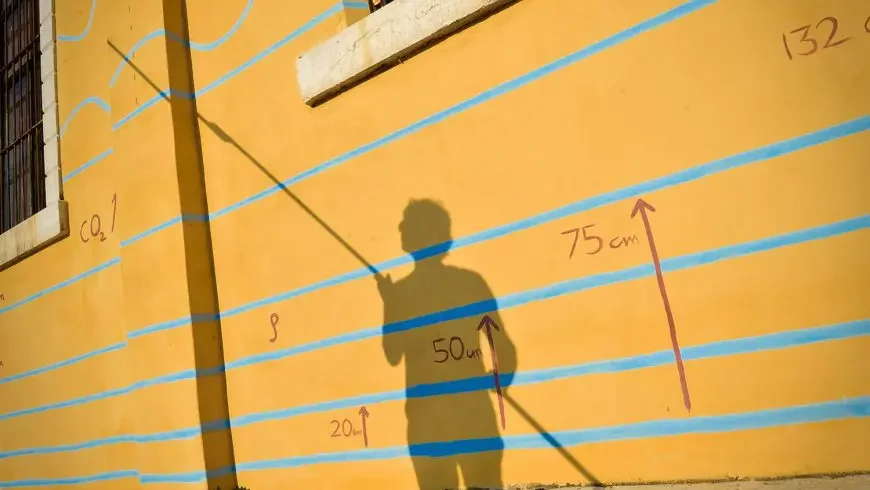
Always staying in the wonderful city of Venice, we also find the work of art by Andreco, an artist who focuses on the relationship between humans, nature, the environment that we create, and the natural landscape. It is a mural made along the banks of the Grand Canal in Fondamenta Santa Lucia. It is an artistic translation of the sea-level rise studies carried out by the research centres involved in the project.
These are just some of the works of art in the world, but they best represent what is happening due to climate change.
Cover image: photo by Elena Mozhvilo via Unsplash
